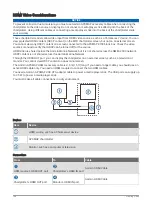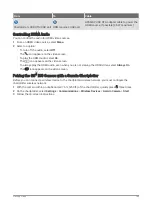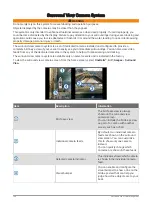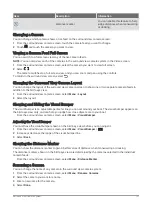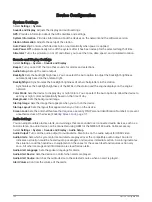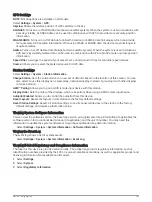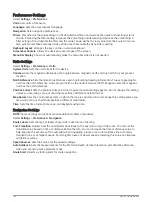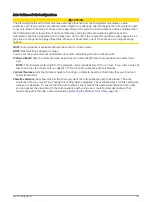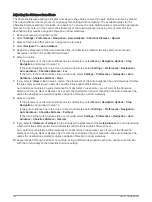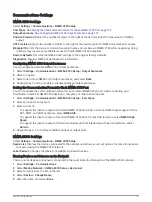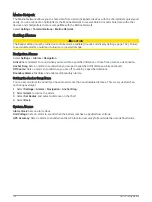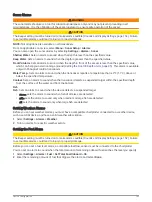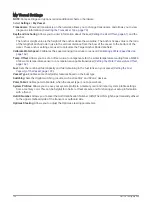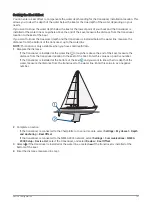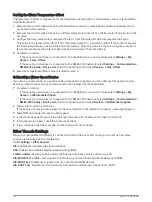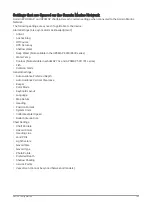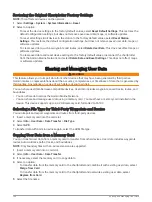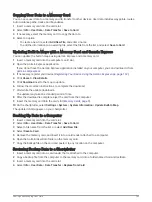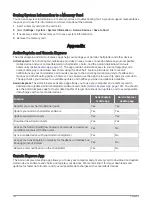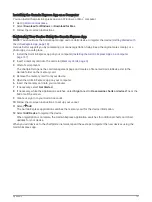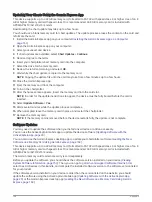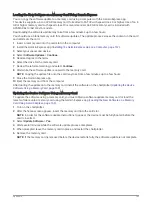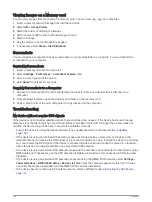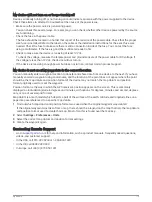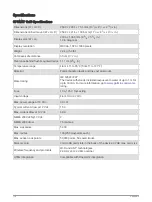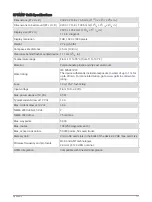
Setting the Water Temperature Offset
The temperature offset compensates for the temperature reading from a temperature sensor or temperature-
capable transducer.
1 Measure the water temperature using the temperature sensor or temperature-capable transducer that is
connected to the network.
2 Measure the water temperature using a different temperature sensor or a thermometer that is known to be
accurate.
3 Subtract the water temperature measured in step 1 from the water temperature measured in step 2.
This value is the temperature offset. Enter this value in step 5 as a positive number if the sensor measures
the water temperature as being colder than it actually is. Enter this value in step 5 as a negative number if
the sensor measures the water temperature as being warmer than it actually is.
4 Complete an action:
• If the sensor or transducer is connected to the chartplotter or a sonar module, select Settings > My
Vessel > Temp. Offset.
• If the sensor or transducer is connected to the NMEA 2000 network, select Settings > Communications >
NMEA 2000 Setup > Device List, select the transducer, and select Review > Temp. Offset.
5 Enter the temperature offset value calculated in step 3.
Calibrating a Water-Speed Device
If you have a speed sensor or a speed-sensing transducer connected, you can calibrate that speed-sensing
device to improve the accuracy of water-speed data displayed by the chartplotter.
1 Complete an action:
• If the sensor or transducer is connected to the chartplotter or a sonar module, select Settings > My
Vessel > Calibrate Water Speed.
• If the sensor or transducer is connected to the NMEA 2000 network, select Settings > Communications >
NMEA 2000 Setup > Device List, select the transducer, and select Review > Calibrate Water Speed.
2 Follow the on-screen instructions.
If the boat is not moving fast enough or the speed sensor is not registering a speed, a message appears.
3 Select OK, and safely increase the boat speed.
4 If the message appears again, stop the boat, and ensure the speed-sensor wheel is not stuck.
5 If the wheel turns freely, check the cable connections.
6 If you continue to get the message, contact Garmin product support.
Other Vessels Settings
When your compatible chartplotter is connected to an AIS device or VHF radio, you can set up how other
vessels are displayed on the chartplotter.
Select Settings > Other Vessels.
AIS: Enables and disables AIS signal reception.
DSC: Enables and disables digital selective calling (DSC).
Collision Alarm: Sets the collision alarm (
Setting the Safe-Zone Collision Alarm, page 31
AIS-EPIRB Test: Enables test signals from Emergency Position Indicating Radio Beacons (EPRIB).
AIS-MOB Test: Enables test signals from man overboard (MOB) devices.
AIS-SART Test: Enables test transmissions from Search and Rescue Transponders (SART).
162
Device Configuration

